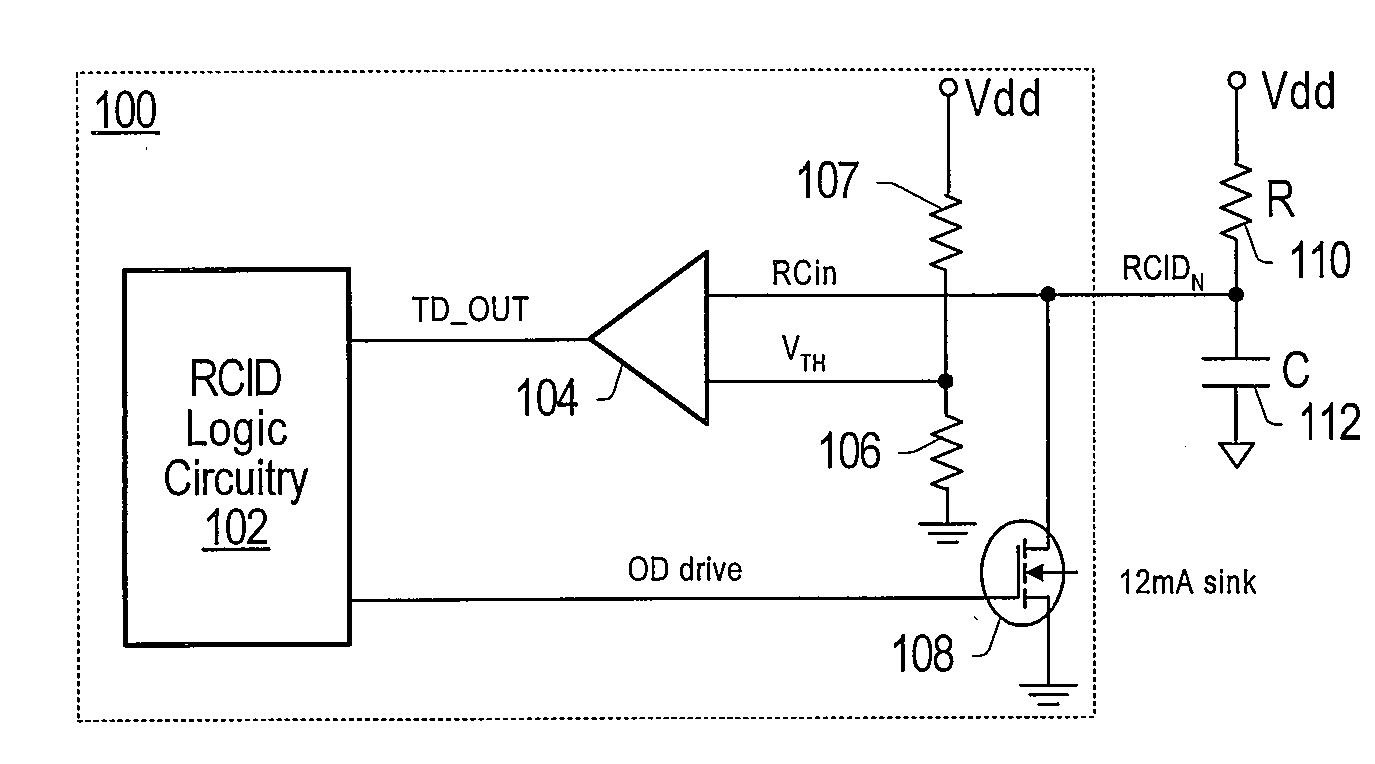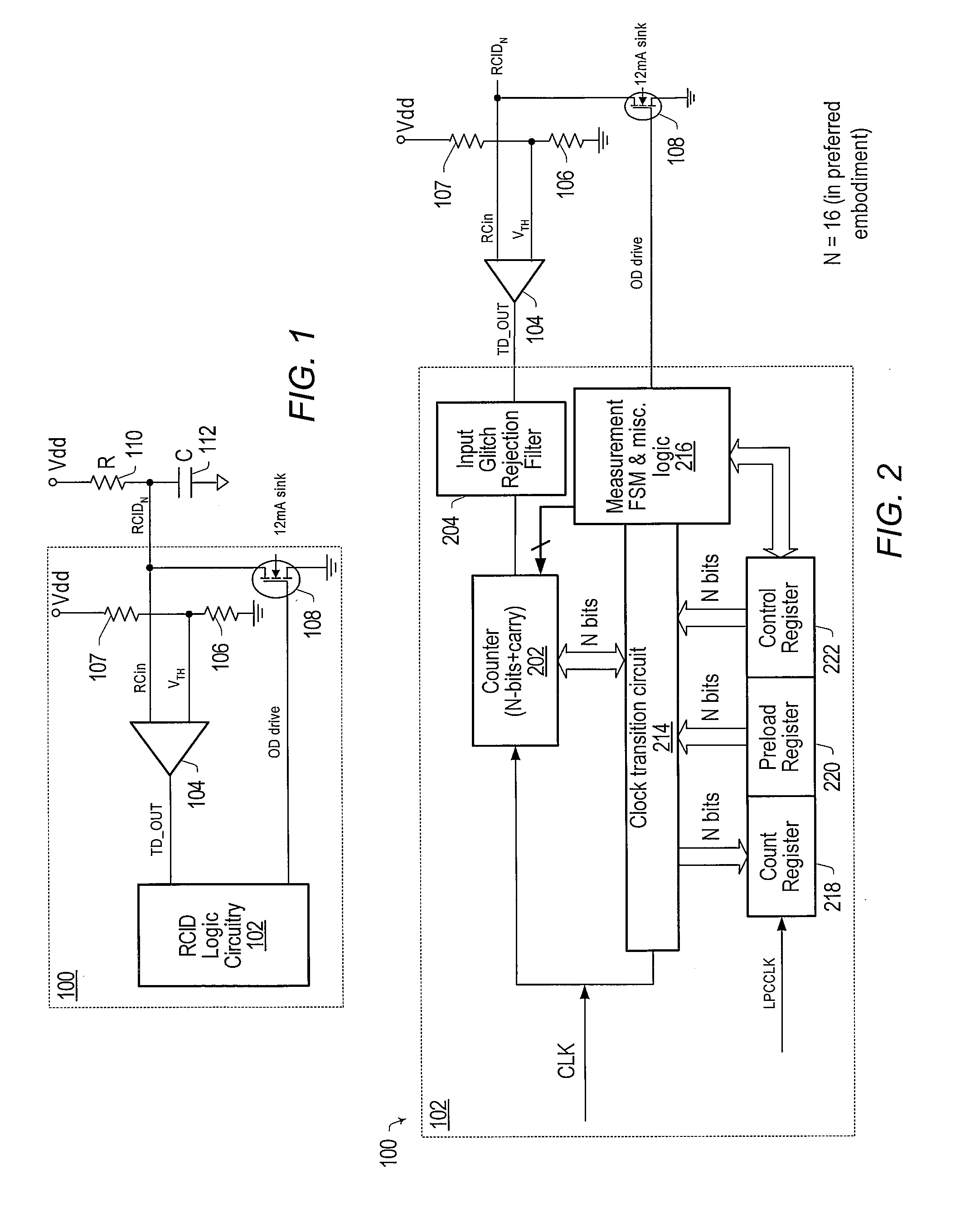Resistor/Capacitor Based Identification Detection
a resistor/capacitor and identification detection technology, applied in the direction of inspection/indentification of circuits, instruments, printed circuit non-printed electric components, etc., can solve the problems of high cost, impracticality, and limited number of gpio pins available for providing system level identification, and achieve the effect of low cos
- Summary
- Abstract
- Description
- Claims
- Application Information
AI Technical Summary
Benefits of technology
Problems solved by technology
Method used
Image
Examples
Embodiment Construction
[0016]FIG. 1 is a block diagram of one embodiment of resistor / capacitor identification detection (RCID) circuit 100. RCID circuit 100 may comprise RCID logic circuitry (RLC) 102 configured to measure the discharge and charge times for an RC circuit comprising resistor 110 and capacitor 112 coupled to a single I / O pin corresponding to RCID circuit 100. RLC 102 may initiate the discharge, followed by the charging of the external RC circuit. Input RCin may simultaneously pass through a threshold detector 104, which may be configured to compare RCin to a threshold voltage VTH set at a specified percentage of supply voltage Vdd via a voltage divider circuit comprising resistors 106 and 107. In one embodiment, Vdd is set to 3.3V, and VTH is set to 2.2V, which is approximately 68% of Vdd. In some embodiments, the accuracy of threshold detector 104 may be ±1%. The output TD_OUT of threshold detector 104 may be provided to RLC 102, which may be configured to obtain / decode system element conf...
PUM
 Login to View More
Login to View More Abstract
Description
Claims
Application Information
 Login to View More
Login to View More - R&D
- Intellectual Property
- Life Sciences
- Materials
- Tech Scout
- Unparalleled Data Quality
- Higher Quality Content
- 60% Fewer Hallucinations
Browse by: Latest US Patents, China's latest patents, Technical Efficacy Thesaurus, Application Domain, Technology Topic, Popular Technical Reports.
© 2025 PatSnap. All rights reserved.Legal|Privacy policy|Modern Slavery Act Transparency Statement|Sitemap|About US| Contact US: help@patsnap.com



